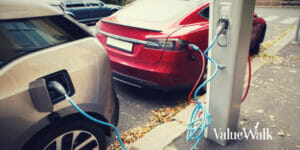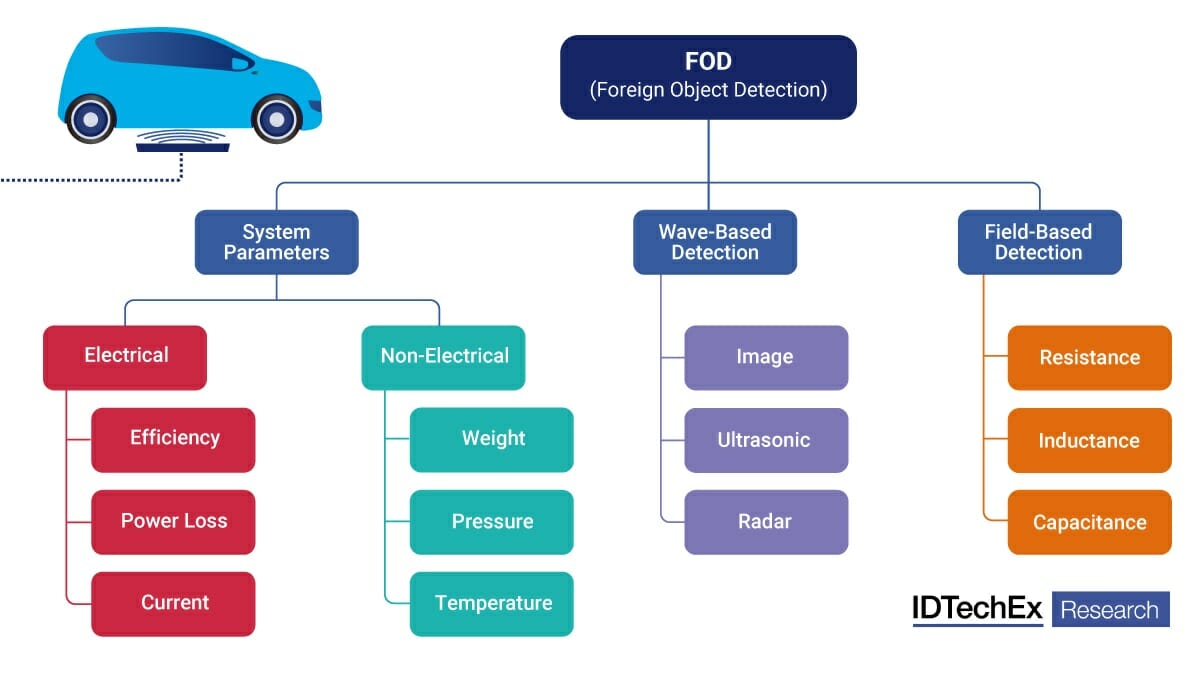Energy & Critical Metals
Wireless EV Charging Is Safer Than Plugging In
Wireless EV Charging Uses Magnetic Fields That Are Inherently Safe The most common method of Wireless Power Transfer (WPT) used today is accomplished via…


Wireless EV Charging Uses Magnetic Fields That Are Inherently Safe
The most common method of Wireless Power Transfer (WPT) used today is accomplished via low to high-frequency (30 kHz to 30 MHz) time-varying magnetic fields. This may also be referred to as ‘inductive WPT’ or ‘magnetic field WPT’.
Wireless chargers operate far below the radio frequencies which are present all around us. Unlike high-energy (ionizing) radiation, electric and magnetic fields (EMFs) in the non-ionizing part of the electromagnetic spectrum cannot damage DNA or cells directly.
Get Our Activist Investing Case Study!
Get the entire 10-part series on our in-depth study on activist investing in PDF. Save it to your desktop, read it on your tablet, or print it out to read anywhere! Sign up below!

Q4 2022 hedge fund letters, conferences and more
At the frequencies used for wireless EV charging, magnetic fields are impervious to air, water, ice, concrete, wood, plastics, and other common non-metallic materials. They pass through these objects and the human body without any interaction or causing any harm whatsoever.
This also allows for hermetically sealed designs that are safer and more robust than are possible with contact-based or wired charging. A wireless system also minimizes the risk of electrocution and trip hazard. The latest report from IDTechEx includes detailed coverage of the standards and safety features around wireless EV charging systems.
Active Shielding Methodologies
Shielding is important for the safe operation of wireless EV chargers. The following problems may occur without shielding: the magnetic field may interfere with the EV or other objects, cause battery heating, and circulate current in metallic parts.
There are two basic methods for shielding against low to medium-frequency magnetic sources, which includes the use of ferrites to provide magnetic flux directionality and aluminum plates to minimize field leakage.
IDTechEx research interviewed various players in the industry and found that shielding is mainly added under the transmitter pad and above the receiver pad. The report finds that instead of radiating EMF, players are recycling the magnetic field and containing it within the pads because it is resonant, highly coupled, and shaped.
Foreign Object Detection (FOD)
The safety of wireless EV chargers is further enhanced by using foreign object detection (FOD) and living object protection (LOP) systems. These systems identify any metallic objects between the transmitting and receiving pad and can suspend power transfer. This is important as metal items, even small objects such as paperclips or coins may heat up and pose a burn risk.
FOD can be achieved in a number of ways. For example, capacitive sensors in the pad can be used to monitor the performance of the coils. A metal object on the pad changes the capacitance, allowing its presence to be detected. That does not necessarily detect organic objects, such as an animal on the pad in a garage, though.
Optical sensors around the edge of the plate using infrared LEDs and photodiode detectors or even Lidar can be used to detect both metal and organic objects on the pad and switch off the charging process if an obstruction is detected.

Categories of FOD methods used in wireless EV charging systems. Source: IDTechEx
IDTechEx research finds that it is important for players to be mindful of interoperability, electromagnetic compatibility (EMC), and safety from the early stages of the development process. Knowing the requirements and standards in place is essential to ensuring that products are compliant and that product redesign and testing time and the cost is minimized.
The report “Wireless Charging Market for Electric Vehicles 2023-2033: Technology, Players and Forecasts” provides insights on the industry R&D status along with the outlook for future developments.
About IDTechEx
IDTechEx guides your strategic business decisions through its Research, Subscription and Consultancy products, helping you profit from emerging technologies. For more information, contact [email protected] or visit www.IDTechEx.com.

Uranium Exploration Company Announces Additional Staking in the Athabasca Basin
Source: Streetwise Reports 12/22/2023
Skyharbour Resources Ltd. announced an update from its Canada-based Falcon Project along with additional…
Tesla Launches New Mega Factory Project In Shanghai, Designed To Manufacture 10,000 Megapacks Per Year
Tesla Launches New Mega Factory Project In Shanghai, Designed To Manufacture 10,000 Megapacks Per Year
Tesla has launched a new mega factory…
Giving thanks and taking stock after “a remarkable year”
An end-of-year thank you to our readers, industry colleagues and advertisers before Electric Autonomy breaks from publishing until Jan. 2
The post Giving…
















